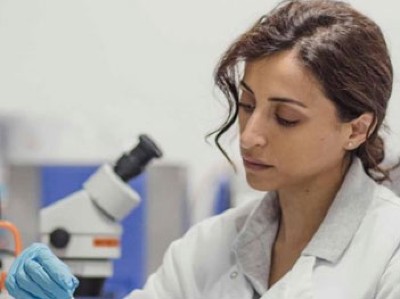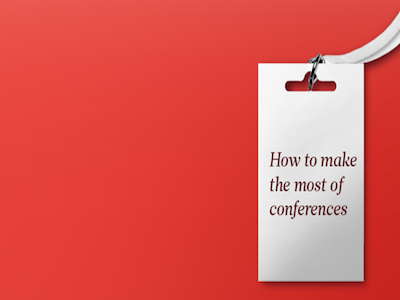Scientific presentations are too often boring and ineffective. Their focus on techniques and data do not make it easy for the audience to understand the main point of the research.
If you want to reach beyond the narrow group of scientists who work in your specific area, you need to tell your audience members why they should be interested. Three things can help you to be engaging and convey the importance of your research to a wide audience. I had been teaching scientific communication for several years when I was approached to write a book about improving scientific presentations1. These are my three most important tips.
State your main finding in your title
The best titles get straight to the point. They tell the audience what you found, and they let them know what your talk will be about. Throughout this article, I will use titles from Nature papers published in the past two years as examples that will stand in for presentation titles. This is because Nature articles have a similar goal of attempting to make discipline-specific research available to a broader audience of scientists. Take, for example: ‘Supply chain diversity buffers cities against food shocks’2.
A great title tells the reader exactly what’s new and precisely conveys the main result, as this one demonstrates. A more conventional title would have been ‘Effect of supply chain diversity on food shocks’, which omits the direction of the effect — so mainly scientists who are interested in your research area will be attracted to the talk. Others will wonder whether the talk will be a waste of time: maybe there was no effect at all.
Another example of a good title is: ‘Organic management promotes natural pest control through altered plant resistance to insects’3.
This title ensures that the audience members know that the talk will be about the beneficial effects of organic crop management before they hear it. They also know that organic management increases plant resistance to insects. This title is much better than one such as: ‘Effects of organic pest management on plant insect resistance’. This title tells the audience the general area of the talk but does not give them the main result.
Finally, look at: ‘A highly magnetized and rapidly rotating white dwarf as small as the Moon’4.
Good titles can just as easily be written for descriptive work as for experimental results. All you need to do is tell your audience what you found. Be as specific as possible. Compare this title with a more conventional one for the same work: ‘Use of the Zwicky Transient Facility to search for short period objects below the main white dwarf cooling sequence’. This title might be of interest to astronomers interested in using this facility, but is unlikely to attract anyone beyond them.
‘But’ is good — use it for dramatic effect
The contradiction implied by the word ‘but’ is one of the most powerful tools a scientist can use5. Contradictions introduce problems and provide dramatic effect, tension and a reason to keep listening.
Without such contradictions, the talk will consist of a bunch of results strung together in a seemingly endless and mind-numbing list. We can think of this list as a series of ‘and’ statements: “We did this and this and ran this experiment and found this result and . . . and . . . and.”
Contrast this with a structure that begins with a few important facts, tethered by ands, and then introduces the problem to be solved. Finally, ‘therefore’ can introduce results or subsequent actions. That structure would look like this: ‘X is the current state of knowledge, and we know Y. But Z problem remains. Therefore, we carried out ABC research.’ The introduction of even one contradiction wakes up people in the audience and helps them to focus on the results.
A paper published earlier this year on SARS-CoV-2 and host protein synthesis provides an excellent example of the narrative form using ‘and’, ‘but’ and ‘therefore’6. In the example below, I have shortened the abstract and simplified the transitions, but maintained the authors’ original structure6. Although they did not use ‘but’ or ‘therefore’ in their abstract, the existence of these terms is clearly implied. I have made them explicit in the following rendition.
“Coronaviruses have developed a variety of mechanisms to repress host messenger RNA translation and to allow the translation of viral mRNA and block the cellular immune response. But a comprehensive picture of the effects of SARS-CoV-2 infection on cellular gene expression is lacking. Therefore, we combine RNA sequencing, ribosome profiling and metabolic labelling of newly synthesized RNA to comprehensively define the mechanisms that are used by SARS-CoV-2 to shut off cellular protein synthesis.”
In this example, background information is given in the first sentence, linked by a series of conjunctions. Then the problem is introduced — this is the contradiction that comes with ‘but’. The solution to this problem is given in the next sentence (and introduced by using ‘therefore’). This structure makes the text interesting. It will do the same for your presentations.
Use repeated problems and solutions to create a story
Use the power of contradiction to maintain audience engagement throughout your talk. You can string together a series of problems and solutions (buts and therefores) to create a story that leads to your main result. The result highlighted in your title will help you to focus your talk so that the solutions you present lead to this overarching result.
Here is the general pattern:
1. Present the first part of your results.
2. Introduce a problem that remains.
3. Provide a solution to this problem by presenting more results.
4. Introduce the next problem.
5. Present the results that address this problem.
6. Continue this ‘problem and solution’ process through your presentation.
7. End by restating your main finding and summarize how it arises from your intermediate results.
The SARS-CoV-2 abstract6 uses this pattern of repeated problems (buts) and solutions (therefores). I have modified the wording to clarify these sections.
1. Result 1: SARS-CoV-2 infection leads to a global reduction in translation, but we found that viral transcripts are not preferentially translated.
2. Problem 1: How then does viral mRNA comes to dominate the mRNA pool?
3. Solution 1: Accelerated degradation of cytosolic cellular mRNAs facilitates viral takeover of the mRNA pool in infected cells.
4. Problem 2: How is the translation of induced transcripts affected by SARS-CoV-2 infection?
5. Solution 2: The translation of induced transcripts (including innate immune genes) is impaired.
6. Problem 3: How is translation impaired? What is the mechanism?
7. Solution 3: Impairment is probably mediated by inhibiting the export of nuclear mRNA from the nucleus, which prevents newly transcribed cellular mRNA from accessing ribosomes.
8. Final summary: Our results demonstrate a multipronged strategy used by SARS-CoV-2 to take over the translation machinery and suppress host defences.
Using these three basic tips, you can create engaging presentations that will hold the attention of your audience and help them to remember you. For young scientists, especially, that is the most important thing the audience can take away from your talk.
"story" - Google News
December 01, 2021 at 11:15PM
https://ift.tt/3d8ItBH
How to tell a compelling story in scientific presentations - Nature.com
"story" - Google News
https://ift.tt/2YrOfIK
https://ift.tt/2xwebYA
Bagikan Berita Ini

















0 Response to "How to tell a compelling story in scientific presentations - Nature.com"
Post a Comment